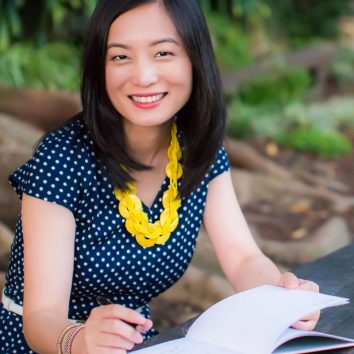
Prime Source focuses on sustainability
— March 16, 2016Sustainability topped the agenda at the Prime Source Forum that brought together 300 senior executives from 17 countries to discuss the challenges and opportunities across the global fashion supply chain.

Delivering the keynote address at the start of the two-day forum, Tino Zeiske, senior vice president for corporate responsibility at Metro AG, discussed the need to urgently consider the implications for a sustainable development of the fashion world following the G7 Summit and COP21 in Paris in December.
“The aspirations are huge, but the real action is low,” Zeiske said. “If you are serious about business, you can’t get away without aligning goals with those of the G7.”
Sustainability issues — from practical solutions to the risks of greater transparency in the supply chain — dominated the discussion at the Mira Hotel in Kowloon this week.
Pascal Brun, global supply chain manager at H&M, one of the first fashion firms to launch a global garment collection initiative in which used clothes are sent to a processing plant, graded and recycled, said last year the Swedish fashion retailer collected 12,000 tons of used clothes.
“There are many challenges in every aspect of the supply chain – energy, chemicals, water supply,’ said Brun. “The transformation is not something that the individual will manage. It must be a collaborative approach.”
Charles Dickinson (pictured), environmental sustainability controller for ethical trade at Primark said a low price point was no indicator of a brand’s commitment to sustainability. He recommended working with bodies such as the Sustainable Apparel Coalition.
Launched in 2012, SAC is a nonprofit organization founded by a group of fashion companies in the U.S. It developed the Higg Index, a self-assessment tool designed to measure the sustainability impact of apparel and footwear products. SAC has conducted 9,000 assessments since it started — 5,000 in the last year.
“We are excited about how many companies are moving to Higg and away from proprietary assessment,” said Jason Kibbey, chief executive officer at SAC. “Now we want to see more brands sharing assessments.”
There are signs that consumers are changing their behavior and voting with their wallets, but the change isn’t happening as fast as Brun would like. He said the most important factors influencing a purchase are price, fashion, quality and the feeling of a garment.
“Sustainability is taking over a little bit of the ‘quality’ factor,” he said. ‘We are seeing more consumers asking questions about what they are buying.”
At Primark, Dickinson said customers are becoming more discerning about where clothes come from and want to know whether the cotton is grown ethically.
Many of the delegates at the conference called for greater collaboration across brands. H&M and Primark are both members of ACT (Action, Collaboration, Transformation), an initiative between brands, manufacturers and trade unions to address the issue of living wages for workers in the global textile and garment supply chains.
“Collaboration is very important,” Dickinson said. “H&M, Primark, C&A, we are all in the same market. Sustainability is not a competitive issue. You can’t get there on your own.”
There was also a call to standardize safety tests. Speaking in favor of greater transparency in the supply chain, Andreas Kim, managing director for Greater China at Lectra, said at present not all chemicals are tested in the same way. He detailed an example where samples from the same material were sent to five labs to test for lead and two labs passed it and three failed it.
“The testing procedure should be the same,” Kim said. “We as an industry need to work together to get rid of inefficiency and dictate our future rather than for the pressure of governments, consumers and the media to do it for us.”
Another industry hot topic was adoption of 3-D and virtual reality. Dwayn Catto, director of business experience consulting at Dassault Systems, said the current technology lends itself well to early stage development where basic materials and fit can get be visualized to get product approval. Far more challenging is use of the technology in the intimate apparel sector where support and comfort are critical.
Ken Chew Tan, business consulting director, consumer goods and retail industry at Dassault Systems, said the new technology is already transforming the online shopping experience. Pointing to the New Balance Web site, he said the 3D online retail experience that allows consumers to create their trainers — picking the model, size, color, pattern and an optional monogram — has transformed the brand’s business model.
Bob Neville, global creative retail director and head of retail at New Balance, said, “There will still be space for human interaction. It’s not about creating gimmicks, technology for technology’s sake. Bricks and mortar won’t go away.”
Turning to the Trans-Pacific Partnership, an ambitious trade agreement pending ratification from the U.S. and 11 other countries, Prabakaran Kesavan, founder of Venlaakwear International, said here would likely be plenty of objections to the agreement, with expected U.S. concern over job losses, but he remained optimistic.
“There are already more countries that want to come on board,” he said. “There is a lot that needs to be done in the next two years – laws have to be enacted, decisions made over who will monitor the agreement.”
Arkebe Oqubay, advisor to the Prime Minister of Ethiopia, attended the forum with a sizable contingent from the landlocked, east African country. He gave a rousing speech about the merits of Ethiopia as a manufacturing base, detailing the rapid development of industrial parks. An example is Hawassa Industrial Park, which he said, had been built in nine months. The park will specialize in apparel and textiles and has been built with sustainability issues at its heart and with a focus on green energy.
“Our growth rate has been 11 percent for the last 12 years – we are the world’s fastest growing economy, and this growth is all driven by agriculture and manufacturing,” said Oqubay, a former mayor of Addis Ababa.
While China was the focus of supply chain discussions for many years, there was just one session on it at this forum — about how the country is tackling the problem of smog. Gong Yan, a professor at the Beijing Institute of Fashion Technology, said 25 percent of Chinese textiles factories had closed following the implantation of the G20’s new green standards. He is especially concerned about air pollution caused by the chemicals involved in the processing of garments.
“In the past there was a lack of standards, but new standards are being put in place and we will have national guidelines,” Gong said. “The small enterprises with low-level efficiency will be phased out and whoever is left will make a better partner.”
Original Link: WWD









